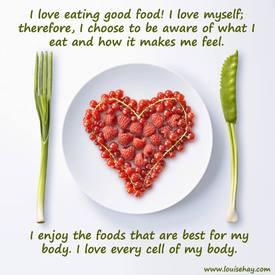What Americans aren't eating
Replies
-
I wonder if this data is affected by the fact our current EBT (food stamps) system allows free will of the card holder to purchase as they please with very limited guidelines and restrictions. Why buy FFV (fresh fruits and vegetables) when you can use the card value to purchase bottled water, Monster Energy drinks, soda, steak and deli items? We do have a WIC voucher system that forces the voucher holder's hand to purchase milk, eggs, beans, grains etc, but the ratio of EBT to WIC recipients is in the range of 9:1.
LOL. Have you ever tried to budget with food stamps?0 -
The thing about our food commodities markets is that they have been globalized to a large extent, just like other types of commodities markets. Alot of farmers, and not just here in the U.S., grow their food to be sold directly into these markets, controlled by distribution companies that work globally - so they pool resources and ship them wherever they are purchased. In theory, I guess that seems like a good thing, and it lets people in different places get access to foods they wouldn't have in off-seasons, and it helps to balance costs throughout the year. But there are a few reasons that I do prefer to buy as "locally" as I can, when I can.
But this has never stopped me from buying Spanish olive oil or imported cheese .
.
What do you mean when you say "a shift in popularity?" You mean, like, if we wanted to eat more of the things produced here?0 -
No, I budget with my own income. My monthly grocery expenses are close to and sometimes less than the average monthly EBT benefit given to a family with a single parent with child (In Wisconsin). So have I ever had to budget with free money, "no". Have I ever had to budget within the same financial range, "All the time".I wonder if this data is affected by the fact our current EBT (food stamps) system allows free will of the card holder to purchase as they please with very limited guidelines and restrictions. Why buy FFV (fresh fruits and vegetables) when you can use the card value to purchase bottled water, Monster Energy drinks, soda, steak and deli items? We do have a WIC voucher system that forces the voucher holder's hand to purchase milk, eggs, beans, grains etc, but the ratio of EBT to WIC recipients is in the range of 9:1.
LOL. Have you ever tried to budget with food stamps?0 -
Lets say the US produces lots of green beans, but exports the majority of them. Surely if green bean consumption rose within the US, the cheapest & fastest way for suppliers to meet that demand would be to sell the produce grown in the country?What do you mean when you say "a shift in popularity?" You mean, like, if we wanted to eat more of the things produced here?0 -
Which foods aren't grown in the US? I'm irish so I wouldn't know.
I am also curious about this, and I've lived in the US all my 52 years.
I don't doubt this data is true, but it's also important to remember that this is not a chart of what American eat, it's what they buy in grocery stores.
It won't includefruits and vegetables from other sources such as homegrown or those bought at farmer's markets or co-ops or things of that nature, or meats from hunting or fish that were caught and eaten.
Of course, it also will include wasted food that were bought and not eaten. And the average American wastes a lot of food.0 -
I think it would depend on how those green beans were going to market. If they were going directly to local markets such as farmers markets and stores that deliberately source locally, and consumers were willing to pay the higher costs usually associated with those stores, then the farmers would sell them there. But if the farmers could make more money selling to the International Green Bean Company, then they would sell there, barring any philosophical restrictions.
Cuz farmers are business people too. They aren't necessarily looking for the cheapest way to meet a demand. Popularity usually drives prices up, not down. 0
Popularity usually drives prices up, not down. 0 -
How does this differ from the choices I can make and pay for? I'm not following.I wonder if this data is affected by the fact our current EBT (food stamps) system allows free will of the card holder to purchase as they please with very limited guidelines and restrictions. Why buy FFV (fresh fruits and vegetables) when you can use the card value to purchase bottled water, Monster Energy drinks, soda, steak and deli items? We do have a WIC voucher system that forces the voucher holder's hand to purchase milk, eggs, beans, grains etc, but the ratio of EBT to WIC recipients is in the range of 9:1.0 -
Thanks for posting this. I found it very interesting.0
-
Am I the only one confused by the recommended intake of soup?!
Yeah, I don't get it...what's wrong with soup that the recommended is so low? It's an easy one pot meal where I can get a lot of veg and protein. I make a ton of soups and stews in the winter...maybe it's processed canned soup? I don't eat much of that, but I make massive batches of homemade soups and stews in the winter...easy, efficient, and cost effective way to feed the family and get nutrition.0 -
I think the chart is pretty accurate when I think about the foods my family members, co-workers, and friends consume.
Why is the recommended for eggs so low?? And what do you think the broad range of "Beverages" entails? Likely soda and tea...and beer....lots of beer consumed at my house. And apparently we all eat way too much soup. Maybe they mean canned soup because it is so high in sodium?
We are trying to do better with buying whole fruit and vegetables in my house. We just have to be comminted to eating it all and using it before it goes bad.
Sort off topic: IMO, low-fat diary is usually pretty gross. We use 1% milk, but I stopped getting "low fat" cream cheese and sour cream...it does not have the right consistency or taste to me and that can ruin a recipe.0 -
Why is the recommended for eggs so low??
Because of the medical recommendation for consumption of dietary cholesterol.0 -
The key phrase is "affected by". Let's put it this way; if the current EBT program did not exist or had heightened restrictions (such as the inability to buy cases of soda, energy drinks, cookies) would this chard look the same. If it followed the WIC program more closely, disallowing garbage food and steering EBT users toward healthy basic options; would the FFV numbers be that insanely low and would beverages be that insanely high?
How does this differ from the choices I can make and pay for? I'm not following.I wonder if this data is affected by the fact our current EBT (food stamps) system allows free will of the card holder to purchase as they please with very limited guidelines and restrictions. Why buy FFV (fresh fruits and vegetables) when you can use the card value to purchase bottled water, Monster Energy drinks, soda, steak and deli items? We do have a WIC voucher system that forces the voucher holder's hand to purchase milk, eggs, beans, grains etc, but the ratio of EBT to WIC recipients is in the range of 9:1.0 -
Why is the recommended for eggs so low??
Because of the medical recommendation for consumption of dietary cholesterol.
seafood (talking mainly stuff other than fish that actually comes from the ocean) often gets a bum wrap on dietary recommendations due to dietary cholesterol as well. It's really misinformation, as certain seafoods have great nutritional benefit otherwise.0 -
Well, the USDA would also have no idea if you're taking your fresh foods home and making soup, so I guess it's premade soups. That's likely limited because of sodium? I'm just surprised that there's a recommendation for soup at all. Where the hell are my recommendations for souffles or mixed bean salads?!Am I the only one confused by the recommended intake of soup?!
Yeah, I don't get it...what's wrong with soup that the recommended is so low? It's an easy one pot meal where I can get a lot of veg and protein. I make a ton of soups and stews in the winter...maybe it's processed canned soup? I don't eat much of that, but I make massive batches of homemade soups and stews in the winter...easy, efficient, and cost effective way to feed the family and get nutrition.0 -
FYI, the US exports way more fish, apples and oranges than it imports.
the fish and vegetables and fruit are what stood out to me the most, and those are (sadly on the fish especially for most of america) largely imported.Which foods aren't grown in the US? I'm irish so I wouldn't know.
Can depend on season for the veggies and fruit though, as a lot are grown in the US.
http://www.indexmundi.com/agriculture/0 -
No, I budget with my own income. My monthly grocery expenses are close to and sometimes less than the average monthly EBT benefit given to a family with a single parent with child (In Wisconsin). So have I ever had to budget with free money, "no". Have I ever had to budget within the same financial range, "All the time".I wonder if this data is affected by the fact our current EBT (food stamps) system allows free will of the card holder to purchase as they please with very limited guidelines and restrictions. Why buy FFV (fresh fruits and vegetables) when you can use the card value to purchase bottled water, Monster Energy drinks, soda, steak and deli items? We do have a WIC voucher system that forces the voucher holder's hand to purchase milk, eggs, beans, grains etc, but the ratio of EBT to WIC recipients is in the range of 9:1.
LOL. Have you ever tried to budget with food stamps?
And you manage to get soda, steaks and deli items for yourself and your child on that $266? I think the 13% of households who use food stamps some time of the year make similar budgeting decisions to yours. Once that money is gone, it's gone and there isn't any more money for food.0 -
I don't drink soda and don't make it available to my daughter, get steak on the rare occasion it's on sale and don't shop the deli. I watch sales, buy generic (unless the sale prices are cheaper for NB) and buy in bulk. I have a small weekly for FFV, milk, bread and eggs.
No, I budget with my own income. My monthly grocery expenses are close to and sometimes less than the average monthly EBT benefit given to a family with a single parent with child (In Wisconsin). So have I ever had to budget with free money, "no". Have I ever had to budget within the same financial range, "All the time".I wonder if this data is affected by the fact our current EBT (food stamps) system allows free will of the card holder to purchase as they please with very limited guidelines and restrictions. Why buy FFV (fresh fruits and vegetables) when you can use the card value to purchase bottled water, Monster Energy drinks, soda, steak and deli items? We do have a WIC voucher system that forces the voucher holder's hand to purchase milk, eggs, beans, grains etc, but the ratio of EBT to WIC recipients is in the range of 9:1.
LOL. Have you ever tried to budget with food stamps?
And you manage to get soda, steaks and deli items for yourself and your child on that $266? I think the 13% of households who use food stamps some time of the year make similar budgeting decisions to yours. Once that money is gone, it's gone and there isn't any more money for food.
Single parent with one child receives over $400 monthly in the State of Wisconsin (in addition to other benefits healthcare, housing, etc). If you think they follow a budget and spend as wisely as I do, you've never stood behind a EBT user in the Wal-Mart checkout or have actual acquaintances who use and abuse the system and go into great detail (almost proud) of their alternative usages.
I'm not saying there aren't honest people who need the programs and purchase wisely. I'm just saying I don't see them because the abuse and mismanagement is so rampant.
"Once that money is gone, it's gone and there isn't any more money for food." true... oh wait, except for the "live in BF/sister/cousin" who kicks them cash on the side for rent. Or the cash from the side work they do. Or possible the revenue generated from ventures they are unable to report the IRS or the DEA will come knocking.0 -
Hey John (and btw I love your pic),
You're right...this time of year we are getting alot of our produce from Central and South America, although if you look carefully, you can still find some items grown in the U.S.. California, Texas, and Florida have a few areas that can support farming year-round.
Well, I live in Canada, and I have a year round kitchen garden. As in, I harvest things like broccoli, brussel sprouts, arugula, spinach, leeks, carrots, kale, and chard in the winter, when there's snow. You don't need a green house either, just some wood to make a frame and an old window or windowed door to put on top of it.
It's not so much about places that can support year round farming, it's that consumers are buying and demanding unseasonable produce and fruit. That creates the importing. That's what creates the market.
I recently saw a really good documentary called "The Future of Food", and about how, most likely, we're all going to be forced to change our diets to local and seasonal in the next 20 years because our planet can't keep up with the demand we're throwing at it right now. Otherwise world hunger will skyrocket, and the gap between classes will increase incredibly. More and more people aren't going to be able to afford food. Very good documentary.
http://ww3.tvo.org/program/166031/the-future-of-food/#20100 -
A little different in Canada......there's no restriction on dietary cholesterol.Why is the recommended for eggs so low??
Because of the medical recommendation for consumption of dietary cholesterol.
seafood (talking mainly stuff other than fish that actually comes from the ocean) often gets a bum wrap on dietary recommendations due to dietary cholesterol as well. It's really misinformation, as certain seafoods have great nutritional benefit otherwise.0 -
So what you're saying, if I understand you, is that the folks using EBT don't eat fresh foods and that the should be required to, or rather that their benefits should be monitored and limited to certain foods deemed appropriate?
The key phrase is "affected by". Let's put it this way; if the current EBT program did not exist or had heightened restrictions (such as the inability to buy cases of soda, energy drinks, cookies) would this chard look the same. If it followed the WIC program more closely, disallowing garbage food and steering EBT users toward healthy basic options; would the FFV numbers be that insanely low and would beverages be that insanely high?
How does this differ from the choices I can make and pay for? I'm not following.I wonder if this data is affected by the fact our current EBT (food stamps) system allows free will of the card holder to purchase as they please with very limited guidelines and restrictions. Why buy FFV (fresh fruits and vegetables) when you can use the card value to purchase bottled water, Monster Energy drinks, soda, steak and deli items? We do have a WIC voucher system that forces the voucher holder's hand to purchase milk, eggs, beans, grains etc, but the ratio of EBT to WIC recipients is in the range of 9:1.0 -
i spend more of fruit and veggies then anything else.. I used to eat more fish, but since there is lack of wild caught here and it's all radioactive now anyway.. That is the one category I would be way off in.0
-
I wonder if this data is affected by the fact our current EBT (food stamps) system allows free will of the card holder to purchase as they please with very limited guidelines and restrictions. Why buy FFV (fresh fruits and vegetables) when you can use the card value to purchase bottled water, Monster Energy drinks, soda, steak and deli items? We do have a WIC voucher system that forces the voucher holder's hand to purchase milk, eggs, beans, grains etc, but the ratio of EBT to WIC recipients is in the range of 9:1.
I agree that a lot of these items are unhealthy and not really food and shouldn't be allowed with food stamps, HOWEVER you can get a lot more "junk" food then you can fresh produce and meat for your dollar.. and with such a limited amount of funds to work with. Its' more important to eat, then it is to eat healthy.
WIC is only for women who have kids under 5. and is severely limited, you have to purchase more food or you'd starve. I don't see how that would make a huge difference overall.0 -
I agree that a lot of these items are unhealthy and not really food and shouldn't be allowed with food stamps, HOWEVER you can get a lot more "junk" food then you can fresh produce and meat for your dollar.. and with such a limited amount of funds to work with. Its' more important to eat, then it is to eat healthy.
I know it varies by state, but ...
My parents were on food stamps for a short time when I was a baby and my dad was in grad school and they managed to buy healthy, fresh foods, cook from scratch and have money left at the end of each month. And I have friends who were able to do the same.
I worked as a grocery store cashier for a couple years and very, very few people on assistance ever did that. Do that job for a while in an area where you get a decent amount of food stamp recipients and you'll see what I mean.0 -
I went to a Japanese hibachi place once and the cook at our table was latino. He did make the onion volcano but didn't squirt sake in our mouths. The terrorists have already won. 'Merica is doomed. On a more sane note I don't care where my food is grown. Just make it cheap and yummy.
That bolded statement shows how much of a disconnect we have with the food supply and the sad state of affairs of this country.
Unbelievable.0 -
So what you're saying, if I understand you, is that the folks using EBT don't eat fresh foods and that the should be required to, or rather that their benefits should be monitored and limited to certain foods deemed appropriate?
The key phrase is "affected by". Let's put it this way; if the current EBT program did not exist or had heightened restrictions (such as the inability to buy cases of soda, energy drinks, cookies) would this chard look the same. If it followed the WIC program more closely, disallowing garbage food and steering EBT users toward healthy basic options; would the FFV numbers be that insanely low and would beverages be that insanely high?
How does this differ from the choices I can make and pay for? I'm not following.I wonder if this data is affected by the fact our current EBT (food stamps) system allows free will of the card holder to purchase as they please with very limited guidelines and restrictions. Why buy FFV (fresh fruits and vegetables) when you can use the card value to purchase bottled water, Monster Energy drinks, soda, steak and deli items? We do have a WIC voucher system that forces the voucher holder's hand to purchase milk, eggs, beans, grains etc, but the ratio of EBT to WIC recipients is in the range of 9:1.
Yeah, that's a slippery slope.
I've always thought it would be nice to require nutrition classes for those using EBT, like with WIC. Except for the higher taxes to pay for the classes. :ohwell:0 -
Its' more important to eat, then it is to eat healthy.
Not when the stuff you put in your mouth is doing more harm than good. If you're really broke, it's still not THAT hard to get food that's better for you than pizza rolls and soda. Rice and beans are cheap and not UNhealthy. There are plenty of pork cuts that are inexpensive and full of good nutrition. Eggs are fairly cheap, etc.0 -
I've always thought it would be nice to require nutrition classes for those using EBT, like with WIC. Except for the higher taxes to pay for the classes. :ohwell:
Those are tax hikes I'd gladly pay for.0 -
Do you know you can't find Florida oranges in Florids grocery stores? You can buy locally-grown ones at farmer's markets and stuff, but we have Californian and Mexican oranges in gorcery stores. They ship ours to other states. SMH.
I'm American and I have no clue what he's talking about. The US is a big country...there aren't many foods we can't grow somewhere in the country.Which foods aren't grown in the US? I'm irish so I wouldn't know.
fruits and veggies are often grown seasonally...the US doesn't cover both the north and southern hemispheres...most of our typical grocery stores change very little in the fruits and veggies offered...you do the math.
That's very interesting to me, considering all the citrus diseases that can be passed through fruit. Texas is a citrus-producing state, so we have very strict guidelines for importing Florida oranges. I would think it would be easiest to sell Florida oranges in Florida, considering that there would be no interstate commerce to deal with.0 -
I have no idea. I don't grow them or sell them, so I don't know how the economics work. But it makes me sad because we have yummy oranges.
Do you know you can't find Florida oranges in Florids grocery stores? You can buy locally-grown ones at farmer's markets and stuff, but we have Californian and Mexican oranges in gorcery stores. They ship ours to other states. SMH.
I'm American and I have no clue what he's talking about. The US is a big country...there aren't many foods we can't grow somewhere in the country.Which foods aren't grown in the US? I'm irish so I wouldn't know.
fruits and veggies are often grown seasonally...the US doesn't cover both the north and southern hemispheres...most of our typical grocery stores change very little in the fruits and veggies offered...you do the math.
That's very interesting to me, considering all the citrus diseases that can be passed through fruit. Texas is a citrus-producing state, so we have very strict guidelines for importing Florida oranges. I would think it would be easiest to sell Florida oranges in Florida, considering that there would be no interstate commerce to deal with.0 -
This chart didn't surprise me at all. It's exactly what I thought the average American bought at the grocery store. I'm just glad I make better decisions than this.0
This discussion has been closed.
Categories
- All Categories
- 1.4M Health, Wellness and Goals
- 398.2K Introduce Yourself
- 44.7K Getting Started
- 261K Health and Weight Loss
- 176.4K Food and Nutrition
- 47.7K Recipes
- 233K Fitness and Exercise
- 462 Sleep, Mindfulness and Overall Wellness
- 6.5K Goal: Maintaining Weight
- 8.7K Goal: Gaining Weight and Body Building
- 153.5K Motivation and Support
- 8.4K Challenges
- 1.4K Debate Club
- 96.5K Chit-Chat
- 2.6K Fun and Games
- 4.8K MyFitnessPal Information
- 12 News and Announcements
- 21 MyFitnessPal Academy
- 1.6K Feature Suggestions and Ideas
- 3.2K MyFitnessPal Tech Support Questions


















